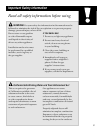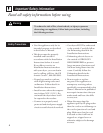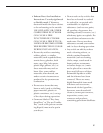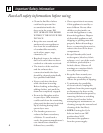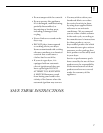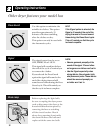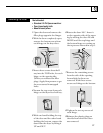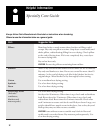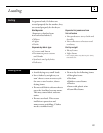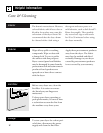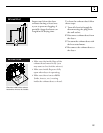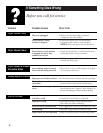
5
• Exhaust Duct—See Installation
Instructions. Use only rigid metal
or flexible metal 4
² diameter
ductwork inside the dryer cabinet
or for exhausting to the outside.
USE OF PLASTIC OR OTHER
COMBUSTIBLE DUCTWORK
CAN CAUSE A FIRE.
PUNCTURED DUCTWORK
CAN CAUSE A FIRE IF IT COL-
LAPSES OR BECOMES OTHER-
WISE RESTRICTED IN USE OR
DURING INSTALLATION.
• Do not dry articles containing
rubber, plastic, or similar
materials (such as padded bras,
tennis shoes, galoshes, bath
mats, rugs, bibs, baby pants,
plastic bags, pillows, etc.) as
these materials may melt or
burn. Also, some rubber
materials, when heated, can
under certain circumstances
produce fire by spontaneous
combustion.
• Do not store items that may
burn or melt (such as clothing,
paper material, plastics or
plastic containers, etc.) on top
of the dryer during operation.
• Garments labeled “Dry Away
from Heat” or “Do not Tumble
Dry” (such as life jackets contain-
ing Kapok) must not be put in
your dryer.
• Do not wash or dry articles that
have been cleaned in, washed
in, soaked in, or spotted with
combustible or explosive
substances (such as wax, paint,
oil, gasoline, degreasers,
dry-
cleaning
solvents, kerosene, etc.)
which may ignite or explode. Do
not add these substances to the
wash water. Do not use these
substances around your washer
and/or dryer during operation.
• Any article on which you have
used a cleaning solvent, or
which contains flammable
materials (such as cleaning
cloths, mops, towels used in
beauty salons, restaurants,
or barber shops, etc.) must
not be placed in or near the
dryer until all traces of these
flammable liquids or solids
and their fumes have been
removed. There are many
highly flammable items used
in homes such as acetone,
denatured alcohol, gasoline,
kerosene, some household
cleaners, some spot removers,
turpentines, waxes, wax
removers and products
containing petroleum distillates.





